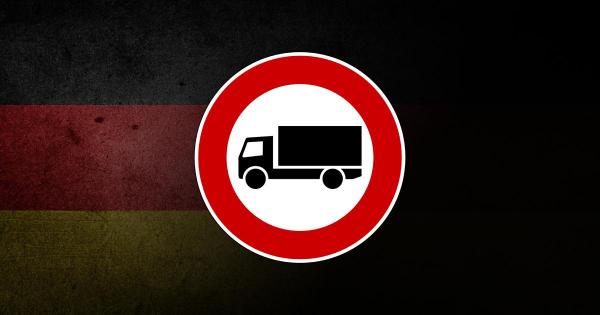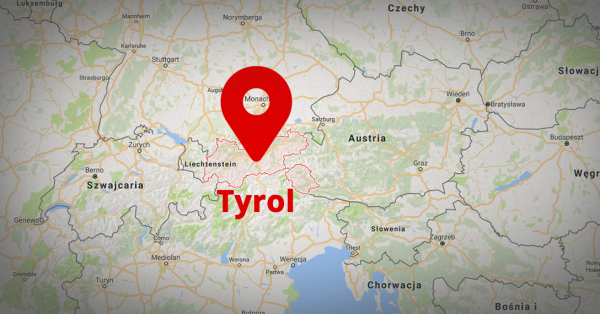
Ausnahmen von den Lenk und Ruhezeiten in Rheinland-Pfalz und Nordrhein-Westfalen
Das BMVI hat vor dem Hintergrund der aktuellen Unwetterereignisse in Rheinland-Pfalz und Nordrhein-Westfalen für Transporte, die in Zusammenhang mit Hilfeleistung oder der Folgenbeseitigung der Unwetterschäden stehen, zunächst bis zum 1. August 2021 Ausnahmen von den Lenk und Ruhezeiten.
Die folgenden Abweichungen werden zugelassen:
- • die tägliche Lenkzeit höchstens fünfmal in der Woche auf höchstens 10 Stunden verlängert werden darf
- • die wöchentliche Lenkzeit 59 Stunden nicht überschreiten darf
- • ein Fahrer kann zwei aufeinanderfolgende reduzierte wöchentliche Ruhezeiten einlegen, sofern der Fahrer in vier jeweils aufeinanderfolgenden Wochen mindestens vier wöchentliche Ruhezeiten einlegt, non denen mindestens zwei regelmäßige wöchentliche Ruhezeiten sein müssen. Jede Reduzierung der wöchentlichen Ruhezeit ist durch eine gleichwertige Ruhepause auszugleichen, die ohne Unterbrechung vor dem Ende der dritten Woche nach der betreffenden Woche zu nehmen ist. Wurden zwei reduzierte wöchentliche Ruhezeiten nacheinander eingelegt, ist die nächste Ruhezeit – als Ausgleich fur diese zwei reduzierten wöchentlichen Ruhezeiten – vor der daruaffolgenden wöchentlichen Ruhezeit einzulegen.
Die Ausnahme gilt befristet bis einschließlich 01.08.2021 nur für Transporte, die in Zusammenhang mit Hilfeleistung oder der Folgenbeseitigung der Unwetterschäden stehen.

Germany is relaxing the rules governing driving and rest times
Following a series of storms in Rhineland-Palatinate and North Rhine-Westphalia, the Federal Ministry of Transport and Digital Infrastructure has relaxed the rules concerning driving and rest periods until August 1, 2021 for transports involving assistance or the elimination of the negative effects of storm damage.
The following relaxations have been introduced:
- • the daily driving time may be extended to a maximum of 10 hours five times a week at the most
- • the weekly driving time must not exceed 59 hours
- • A driver can take two consecutive reduced weekly rest periods, provided that at least four weekly rest periods are taken in four consecutive weeks, of at least two must be regular weekly rest periods. Any reduction in the weekly rest period must be compensated for by an equivalent rest period, which must be taken without interruption before the end of the third week following the week in question. If two reduced weekly rest periods have been taken one after the other, the next rest period – to compensate for these two reduced weekly rest periods – must be taken before the following weekly rest period.
The relaxation applies for a limited period up to and including August 1st, 2021 only for transports that related to providing assistance or eliminating the effects of storm damage.

Ausnahmeregelungen wegen der Unwetterkatastrophe: Sonn- und Feiertagsfahrverbot, FerReiseV vom Samstagsfahrverbot sowie Lenk-und Ruhezeiten
Mehrere Länder haben eine allgemeine Ausnahmegenehmigung gem. § 46 Abs. 2 StVO vom Sonn- und Feiertagsfahrverbot nach § 30 Abs. 3 und 4 StVO und gem. § 4 Abs. 3 FerReiseV vom Samstagsfahrverbot gem. § 1 FerReiseV erlassen.
✅ In Rheinland-Pfalz gilt die Ausnahmeregelung für das Führen von Lastkraftwagen über 7,5 t sowie Anhänger hinter Lastkraftwagen zur geschäftsmäßigen oder entgeltlichen Beförderung von Gütern im Zusammenhang mit den Rettungs- und Aufräumarbeiten sowie zur Versorgung der Bevölkerung aufgrund der Hochwasserkatastrophe sowie Leerfahrten in direktem Zusammenhang mit diesen Transporten. Die Ausnahmegenehmigung gilt bis aufs weiteres, längstens jedoch bis zum 31. August 2021.
✅ In Hessen gilt die Ausnahmeregelung für Beförderungen, die unmittelbar oder mittelbar im Zusammenhang mit der Hilfeleistung und Folgenbeseitigung der Unwetterschäden sowie der damit verbundenen Versorgung der Bevölkerung stehen. Die Ausnahmegenehmigung gilt bis einschließlich 01.08.2021.
✅ In Baden-Württemberg gilt die Ausnahmeregelung für Beförderungen, die unmittelbar oder mittelbar im Zusammenhang mit der Hilfeleistung und Folgenbeseitigung der Unwetterschäden sowie der damit verbundenen Versorgung der Bevölkerung stehen. Die Ausnahmegenehmigung gilt bis einschließlich 01.08.2021.
✅ In Niedersachsen gilt die Ausnahmeregelung für Beförderungen, die unmittelbar oder mittelbar im Zusammenhang mit der Hilfeleistung und Folgenbeseitigung der Unwetterschäden sowie der damit verbundenen Versorgung der Bevölkerung stehen sowie Leerfahrten in direktem Zusammenhang mit diesen Transporten. Die Ausnahmegenehmigung gilt bis einschließlich 01.08.2021.
✅ In Sachsen-Anhalt gilt die Ausnahmeregelung für Beförderungen, die unmittelbar oder mittelbar im Zusammenhang mit der Hilfeleistung und Folgenbeseitigung der Unwetterschäden sowie der damit verbundenen Versorgung der Bevölkerung stehen. Die Ausnahmegenehmigung gilt bis einschließlich 01.08.2021.Ausnahmen zu Lenk-und Ruhezeiten.
✅ In Bremen gilt die Ausnahmeregelung für Beförderungen, die unmittelbar oder mittelbar im Zusammenhang mit der Hilfeleistung und Folgenbeseitigung der Unwetterschäden sowie der damit verbundenen Versorgung der Bevölkerung stehen sowie Leerfahrten in direktem Zusammenhang mit diesen Transporten. Die Ausnahmegenehmigung gilt für das Sonn- und Feiertagsfahrverbot gemäß § 30 Abs. 3 StVO; eine ergänzende Ausnahmeregelung von den Vorschriften der Ferienreiseverordnung ist nicht erforderlich, da von diesen Fahrverbotsstrecken die Bremer Autobahnen nicht betroffen sind. Die Regelung gilt bis einschließlich 01.08.2021.
✅ Mecklenburg-Vorpommern und Saarland haben denselben Text wie die anderen Bundesländer; hier kann der Text von Niedersachsen wieder übernommen werden.
Ausnahmen zu Lenk-und Ruhezeiten
Ausnahmen von den Lenk und Ruhezeiten in Rheinland-Pfalz und Nordrhein-Westfalen
BAG

Exceptions to the Sunday driving ban and relaxations of regulations concerning driving and rest times
Several German lands have issued a general from the driving ban on Sundays and public holidays (SoFv) and the driving ban set out in the Vacation Travel Ordinance (FerReiseV)
In Rhineland-Palatinate, the exception applies to HGVs and semi-trailers with a MAM of 7.5 tonnes performing transports related to rescue operations, cleaning works and provision of supplies to the population affected by recent storms and floods, as well as empty journeys directly related to these transports. The exception is valid until further notice, but not later than August 31.
In Hesse, the exception applies to transports directly or indirectly related to the provision of assistance, elimination of the effects of recent storms and the provision of supplies to the population. The exemption is valid until and including August 1.
In Baden-Württemberg, the exception applies to transports that are directly or indirectly related to the provision of assistance, elimination of the effects of recent storms and the provision of supplies to the population. The exception is valid until and including August 1.
In Lower Saxony, the exception applies to transports that are directly or indirectly related to the provision of assistance, elimination of the effects of recent storms and the provision of supplies to the population, as well as empty journeys directly related to these transports. The exemption is valid until August 1.
In Saxony-Anhalt, the exception applies to transports that are directly or indirectly related to the provision of assistance, elimination of the effects of recent storms and the provision of supplies to the population. The exemption is valid until and including August 1.
In Bremen, the exception applies to transports directly or indirectly related to the relief operation following recent storms and the provision of supplies to the affected population, as well as empty journeys directly related to these transports. The exemption applies to the driving ban on Sundays and public holidays; no additional exemption from the Vacation Travel Ordinance is required as motorways in Bremen are not covered by these traffic restrictions. The regulation is valid until and including August 1.
Exemptions in Mecklenburg-Vorpommern and the Saarland are the same as in Lower Saxony.
Relaxations of the rules concerning driving and rest periods can be found here.
Germany is relaxing the rules governing driving and rest times

Tyrol: turn-off bans on the B 179
This summer the B 179 in Tyrol is again one of the main routes for north-south and south-north traffic.
There have already been a number of traffic jams during the past weekends, and over the next weekends – especially the upcoming one, which coincides with the start of vacations in Bavaria and Baden-Württemberg – even more tourist traffic can be expected, resulting in more tailbacks and heavy evasion traffic. Two years ago, the same situation caused considerable congestion and affected the security of supply, which is why the authorities prohibited drivers from turning off the B 179.
In order to guarantee the safety and uninterrupted flow of traffic in the low level road network and in the the municipalities located along the B 179, the state of Tyrol, following recommendation of its experts and in close coordination with the authorities, has imposed turn-off bans in the Reutte area, which will be in effect from 7 a.m. on Saturday, July 31, to 7 p.m. on Sunday, September 12, and will aplly to all vehicles in transit, in both directions. Specifically, this concerns the slip roads in the area of Reutte Nord and Vils. Originating and terminating traffic and local residents are excluded from the ban.
Information on turn-off bans
The turn-off bans in the Reutte district affect the following road sections:
• L 288 Pinswanger Straße (entire length)
In addition, from the intersection with the slip road in the direction of Pflach to the Wiesbichl roundabout in Pflach
• L 69 Reuttener Straße (from the intersection of L 396 Weißhausstraße with the Vils slip road) in the direction of Pflach to the Wiesbichl roundabout in Pflach

Romania: additional HGV driving bans owing to heatwaves
The ban has been introduced as a result of heatwave warnings issued by the National Meteorological Administration.
The driving ban for vehicles with a maximum authorised mass of over 7.5 tons is in effect from 29 to 31 July, between 12.00 and 8.00 p.m. across the entire road network, with the exception of the counties of Harghita, Neamt, Suceava and Botosani.
The measure is intended to protect road sections with bituminous surfaces from serious irreversible deformations (that could result in the loss of road stability), which may occur as a result of heavy traffic in hot weather.
The ban does not apply to:
• passenger transport;
• transport of live animals and perishable animal and vegetable products;
• vehicles involved in interventions associated with force majeure events;
• funeral transports;
• postal transports;
• transports of first aid equipment;
• fuel distribution transport;
• transport of goods at controlled temperature;
• transports involving towing damaged vehicles;
• transports related to the distribution of water and food in areas affected by a natural disaster;
• transports involving specialized vehicles used in the construction of sanitary facilities;
• transport of bottled water;
• transport of farm products;
• military transports taking part in international exercises.

Entry into Germany only with a negative COVID test. What about HGV drivers?
From August 1, entry into Germany is, in principle, only possible with a negative test result. This applies to persons travelling by road and by air.
Rapid antigen tests can be performed at the earliest 48 hours (PCR, LAMP, TMA tests 72h) before entering Germany. Rapid antigen tests must meet the WHO criteria, i.e. sensitivity o≥ 80%, specificity ≥ 97%. The test result must be in English, German, English, French, Spanish or Italian. Polish tests are recognized if their results are translated. The time is counted from the moment the sample was taken, not from the receipt of the result.
A negative test result when entering Germany is not required for:
– children up to 12 years of age;
– vaccinated persons (14 days after the administration of the last dose of a vaccine authorized in the EU);
– convalescents (from 28 days up to 6 months after the infection);
– persons professionally involved in transporting persons or goods;
– cross-border workers;
– persons crossing the border as part of local border traffic, up to 24 hours.
The EU COVID-19 Certificate can serve as confirmation of the holder’s vaccination or recovery status. Cross-border workers and persons in local border traffic do not have to have a negative test result when crossing the land border. However, if they arrive in Germany, they must either have a negative test result or use another exemption.
Entry into Germany from risk areas
From August 1, 2021, two kinds of risk areas are distinguished:
– high risk area (Hochrisikogebiet);
– area of variants of concern (Virusvariantengebiet).
The current list of risk areas is available in German and English at Instytutu Roberta Kocha.
Poland is not considered a risk area.
Entry from a high-risk area
A negative test result when entering Germany from a high-risk area is not required from:
– children up to 12 years of age;
– vaccinated persons (14 days after the administration of the last dose of a vaccine authorized in the EU);
– convalescents (from 28 days up to 6 months after the infection);
– persons professionally involved in transporting persons or goods;
Entry from an area of variants of concern
Entry into Germany from an area of variants of concern is, in principle, only possible for German nationals and residents. If you live in Germany, you should present your residence certificate (German: Meldebescheinigung). All persons entering an area of variants of concern must have a test result conducted 24 hours before entering Germany at the earliest (PCR, LAMP, TMA tests conducted up to 72h before entering) and must undergo a 14-day quarantine. It is not possible to shorten the quarantine. There is no quarantine exemption for those who have been vaccinated or for convalescents.
Cross-border workers or persons in local border traffic for up to 24 hours between an area of variants of concern and Germany have to perform tests twice a week. Persons who are professionally involved in transporting persons or goods must also have a negative test result and do not need to quarantine if their stay in Germany or in an area of variants of concern does not exceed 72 hours.

Ausnahmeregelungen wegen der Unwetterkatastrophe
Sonn- und Feiertagsfahrverbot, FerReiseV vom Samstagsfahrverbot sowie Lenk-und Ruhezeiten.
Folgende Bundesländer haben von ihrer Möglichkeit Gebrauch gemacht, Ausnahmen vom Sonn- und Feiertagsfahrverbot nach § 30 Abs. 3 und 4 StVO und vom Samstagsfahrverbot gem. § 1 und § 4 Abs. 3 FerReiseV zu machen. Dazu haben die Länder eine allgemeine Ausnahmegenehmigung gem. § 46 Abs. 2 StVO und gem. § 4 Abs. 3 FerReiseV erlassen oder sehen derzeit von einer Kontrolle und dem Vollzug der Fahrverbote unter Anwendung des Opportunitätsprinzips ab.
Die Ausnahmeregelungen gelten für Beförderungen, die unmittelbar oder mittelbar im Zusammenhang mit der Hilfeleistung und Folgenbeseitigung der Unwetterschäden sowie der damit verbundenen Versorgung der Bevölkerung stehen sowie Leerfahrten in direktem Zusammenhang mit diesen Transporten.
o Baden-Württemberg (bis einschl. 15. August 2021),
o Bayern (bis einschließlich 15. August 2021),
o Brandenburg (bis einschließlich 31. August 2021),
o Hessen (bis einschließlich 15. August 2021),
o Mecklenburg-Vorpommern (bis einschließlich 15. August 2021),
o Niedersachsen (bis einschließlich 31. August 2021),
o Nordrhein-Westfalen (bis einschließlich 31. August 2021)
o Rheinland-Pfalz (bis einschließlich 31. August 2021).
o Saarland (bis einschließlich 31. August 2021),
o Sachsen (bis einschließlich 15. August 2021) und
o Schleswig-Holstein (bis einschließlich 15. August 2021).
In Bremen und Hamburg wird bis auf weiteres von dem Vollzug der genannten Fahrverbote abgesehen.
Ausnahmen zu Lenk-und Ruhezeiten
Für Beförderungen im Zusammenhang mit der Hilfeleistung und Folgenbeseitigung der aktuellen Unwetterschäden gelten folgende Ausnahmeregelungen bis zum 14.08.2021.
1. Die tägliche Lenkzeit darf fünfmal in der Woche auf 10 Stunden verlängert werden (abweichend von Art. 6 Abs. 1 S.2 der VO (EG) Nr. 561/2006)
2. Die wöchentliche Lenkzeit darf 59 Stunden nicht überschreiten (abweichend von Art.6 Abs. 2 der VO (EG) Nr. 561/2006)
3. Es ist zulässig, zwei aufeinanderfolgende reduzierte wöchentliche Ruhezeiten einzulegen, sofern der Fahrer in vier jeweils aufeinanderfolgenden Wochen mindestens vier wöchentliche Ruhezeiten einlegt, von denen mindestens zwei regelmäßige wöchentliche Ruhezeiten sein müssen. Jede Reduzierung der wöchentlichen Ruhezeit ist durch eine gleichwertige Ruhepause auszugleichen, die ohne Unterbrechung vor dem Ende der dritten Woche nach der betreffenden Woche zu nehmen ist. Wurden zwei reduzierte wöchentliche Ruhezeiten nacheinander eingelegt, ist die nächste Ruhezeit – als Ausgleich für diese zwei reduzierten wöchentlichen Ruhezeiten – vor der darauffolgenden wöchentlichen Ruhezeit einzulegen (abweichend von Art. 8 Abs. 6 der VO (EG) Nr. 561/2006).
Dabei ist zu beachten, dass eine Ausnahme ausschließlich unter der Voraussetzung in Anspruch genommen werden darf, dass durch deren Inanspruchnahme die Verkehrssicherheit nicht beeinträchtigt wird.
BAG

Germany: exceptions to HGV driving bans due to floods
The following federal states have introduced exceptions to the driving ban on Sundays and public holidays and the Saturday driving ban in accordance with Section 1 and 4 (3) FerReiseV. The federal states have either issued a general exemption or are currently refraining from checking and enforcing driving bans.
The exceptions apply only to transports that are directly or indirectly related to the provision of assistance, elimination of the effects of recent storms and the provision of supplies to local communities as well as empty trips in direct connection with these transports.
– Baden-Württemberg (up to and including August 15),
– Bavaria (up to and including August 15),
– Brandenburg (up to and including August 31, 2021),
– Hesse (up to and including August 15, 2021),
– Mecklenburg-Western Pomerania (up to and including August 15),
– Lower Saxony (up to and including August 31),
– North Rhine-Westphalia (up to and including August 31)
– Rhineland-Palatinate (up to and including August 31).
– Saarland (up to and including August 31),
– Saxony (up to and including August 15) and
– Schleswig-Holstein (up to and including August 15).
In Bremen and Hamburg, the above driving bans will not be enforced until further notice.
Exceptions to driving and rest times
1. The following exceptions apply until August 14, for transports related to the provision of aid and elimination of the effects of recent storms.
2. The daily driving time may be extended to 10 hours five times a week (by way of derogation from Article 6, Paragraph 1, Sentence 2 of Regulation (EC) No. 561/2006)
The weekly driving time must not exceed 59 hours (by way of derogation from Article 6 (2) of Regulation (EC) No. 561/2006)
3. A driver can take two consecutive reduced weekly rest periods, provided that at least four weekly rest periods are taken in four consecutive weeks, of at least two must be regular weekly rest periods. Any reduction in the weekly rest period must be compensated for by an equivalent rest period, which must be taken without interruption before the end of the third week following the week in question. If two reduced weekly rest periods have been taken one after the other, the next rest period – to compensate for these two reduced weekly rest periods – must be taken before the following weekly rest period (by way of derogation from Art. 8 (6) of Regulation (EC) No. 561/2006).
It should be noted that an exception may only be used on the condition that it does not impair road safety.
BAG

Hungary: changes in HGV driving bans
The Hungarian Ministry of Transport has approved a temporary lifting of the HGV driving ban during the weekend from 20th to 22nd of August by establishing so-called \”time windows\” when the movement of HGVs with a DMC above 7.5t is allowed.
In this way, the period when the driving ban is in effect has been split into 3 periods instead of having one lasting continuously for several days.
The driving restrictions apply
• from 8:00 am to 10:00 pm on August 20 (Friday)
• from 6:00 am to 10:00 pm on August 21 (Saturday)
• from 6:00 am to 10:00 pm on August 22 (Sunday)
When the above driving bans are in effect, HGVs returning from abroad are allowed to get to the company’s base in Hungary or to the first place of unloading, with the exception of roads listed below:
• along the entire length of the M7 motorway;
• Road No. 2 from Budapest to the section 39 +150 km and from the intersection of the M2 motorway, Roads Nos. 2 and 12, to Road No. 2 Parassapusztáig,
• along the entire length of Road 2/A,
• Road No. 6 between Dunaújváros and Budapest
• Road No. 7,
• Road No. 10 between Dorog and Budapest,
• Motorway No. 11 between Esztergom and Budapest,
• along the entire length of Road No. 12,
• along the entire length of the road 1201
• Road No. 51 between the intersection of Road No. 510 and Dömsöd,
• along the entire length of Road No. 71,
• Road No. 76 between intersections with main roads 71 and 7 and between Zalaapáti and Road No. 71,
• Road No. 55 between Alsónyék and Baja,
• Road No. 82 from Road No. 8 to Veszprémvarsányig,
• Road No. 84 from Sümegtől to Road No. 71,
• Road No. 33 from Dormándtól to Debrecen,
• Road No. 86 between Jánossomorja and Nemesbőd, between Körmend and Zalabaksa,
• Road No. 37 between Miskolc and Sátoraljaújhely,
• between the intersection of Road No. 38 with Road No. 37 and Rakamaz.